Fraser fir: popular varieties, planting and care features
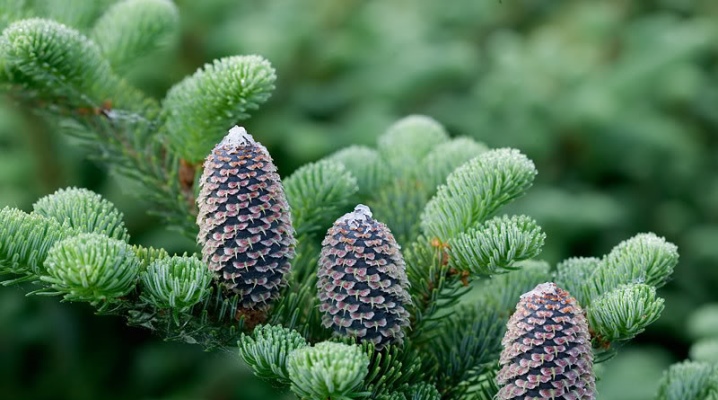
Coniferous crops do not lose their relevance in terms of use in landscape design. Among the plants popular today, it is worth highlighting the Fraser fir, which is remarkable for its decorative component and unpretentious care.
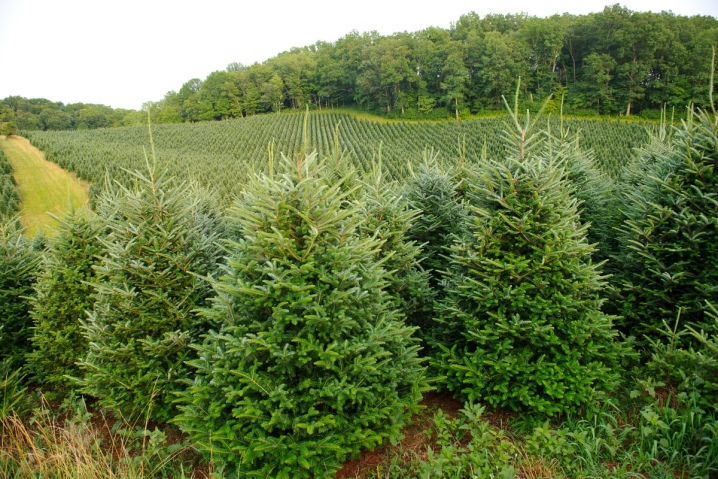
Description
The tree became famous thanks to botanist John Fraser, and the southern part of America is considered the birthplace of culture. The fir got its name in honor of its discoverer; 1811 is considered to be the date of domestication of Abies Fraseri. The plant is a medium-sized evergreen conifer that can grow up to 10 meters in adulthood. The trunk of a tree in this case will be about 45 centimeters in diameter. The ephedra forms a conical green crown, the branches of which can grow straight or at a slope of 45 degrees. The bark on the trunk of the fir does not have a pronounced roughness, it is usually colored gray-brown. However, over time, cracks and various irregularities form on the crop, which helps to judge the age of the ephedra. Some gardeners call the Fraser fir Danish.
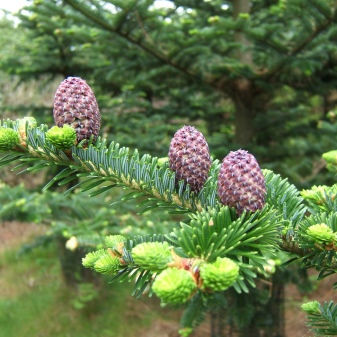
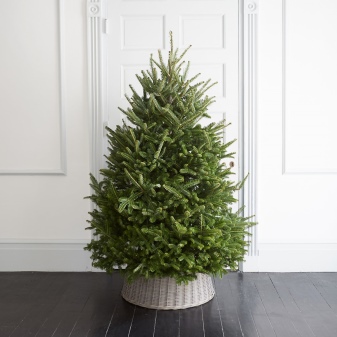
The needles of a tree are needles twisted in a spiral, the length of which will be about 2 centimeters and a width of about 0.3 centimeters. In this case, its color will be deep green, closer to the table, the color may have gray shades. On the underside of the needles there is usually a pair of silvery stripes. Fir fruits are represented by cylindrical cones, which develop in an upright position relative to the crop, their size can reach 7 centimeters, with a width of about 3 centimeters. Young cones are purple in color, and in the process of maturation they change their color to brown. The culture is quite in demand in terms of rooting in the open field, therefore it is used for growing in private gardens and backyard plots, as well as in the design of public areas, urban landscaping.

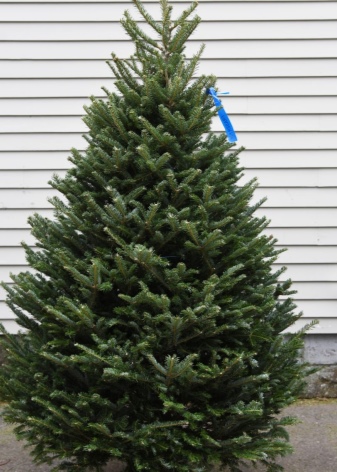
Review of the best varieties
Today, the Fraser fir is represented by two and a half dozen varieties, it is worth highlighting the most demanded.
- Blue Bonnet. An ornamental crop recommended for single rooting or for growing in combination with other conifers. The variety develops extremely slowly. Crohn belongs to cushion varieties, grows asymmetrically, in width usually reaches 3.5-4 meters. The needles develop quite densely, twisting is noticeable at the ends of the needles, the branches grow upward. Fir cones can grow up to 6 centimeters in length, the color is brown with yellow scales.

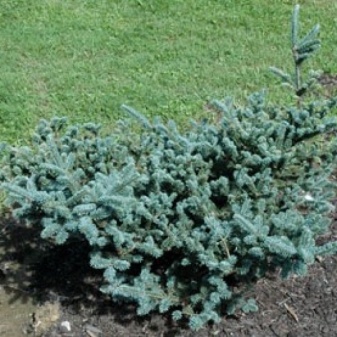
- Brandon Recket. The variety is in demand for cultivation in rockeries, in group or single compositions in the open field. Fir does not grow more than one meter in height, while the crown width can reach 1.5 meters. The crown grows densely, has the shape of a sphere. The needles will have a gray-green color and a short length, as a rule, in one season a miniature culture is able to add in size by an average of 3-5 centimeters. Among the remarkable features of the variety, it is worth highlighting its winter hardiness, the ability of a seedling to develop even on a plot in partial shade.
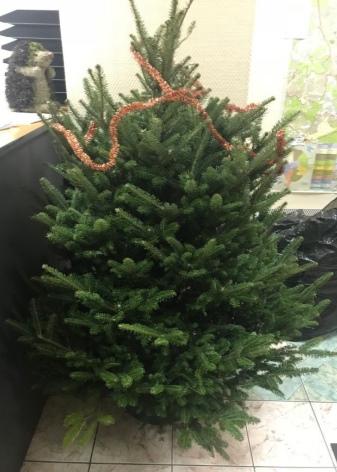
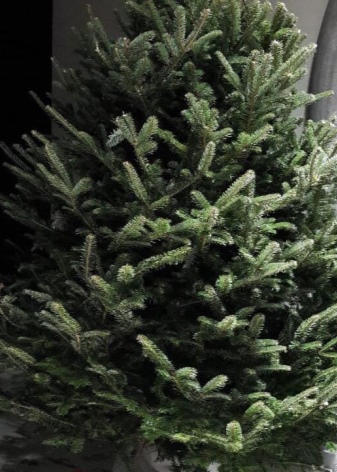
- Franklin. Another decorative dwarf variety of Fraser fir, which is often purchased for rockeries and heather gardens.The crown of the plant will have a rounded shape, it stands out for its density. The surface of the needles is shiny, painted green with a silvery sheen. The culture grows in a year by only 5-7 centimeters. The plant is unpretentious to the peculiarities of the illumination of the area where it grows, but in full shade the fir is likely to die.
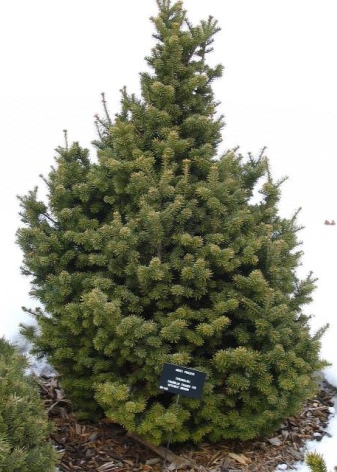
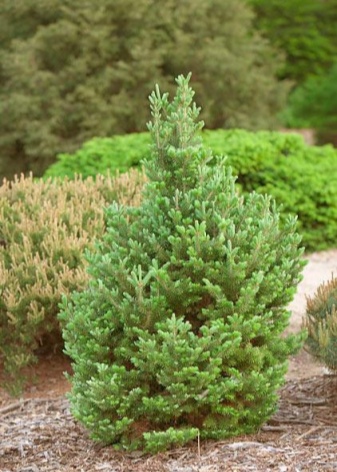
- Prostrata. The variety belongs to crops with creeping branches. The shrub does not stand out for its large size. As a rule, such varieties are in demand for landscaping in small areas.
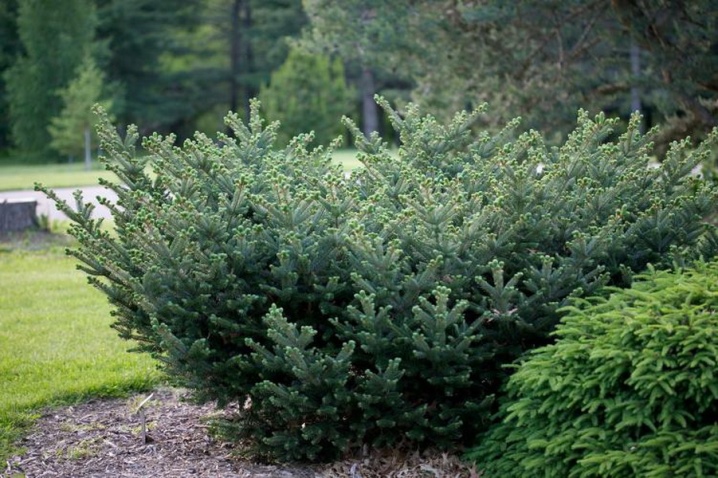
In addition to the above-mentioned Fraser fir hybrids, the following varieties are in demand in nurseries:
- Raul's Dwarf;
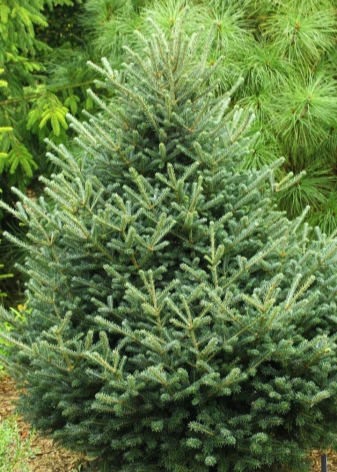
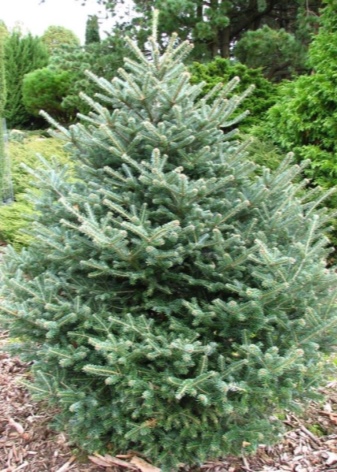
- Piglets;
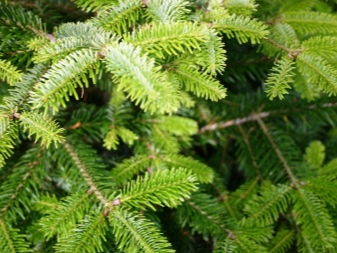

- Fastigiata compacta and others.
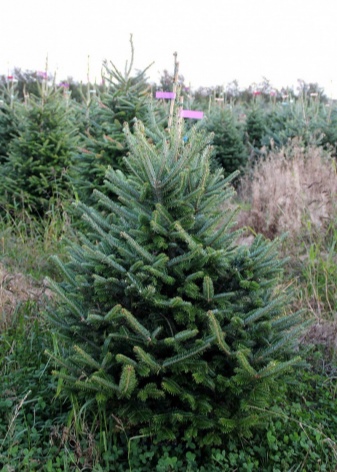
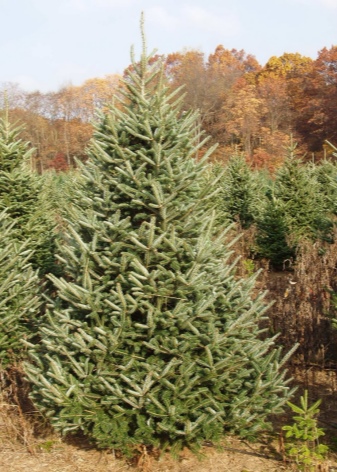
Landing rules
In order for the plant to develop correctly and not lose its decorative attractiveness, before rooting the Fraser fir, it is worthwhile to thoroughly approach the choice of a place for planting. In its natural environment, evergreen culture grows in mountainous areas at high altitudes, where, for the most part, high air humidity prevails, while the temperature does not rise to critically high levels. Summer there will be short, and winter long and with abundant snow cover. If it is not possible to create ideally close conditions to the wild in the garden, then the ephedra is best planted in partial shade. Fir will have certain requirements for the composition of the soil in the open field - it is most correct to plant the ephedra in a light and fertile soil with medium acidity and the presence of a good drainage layer.

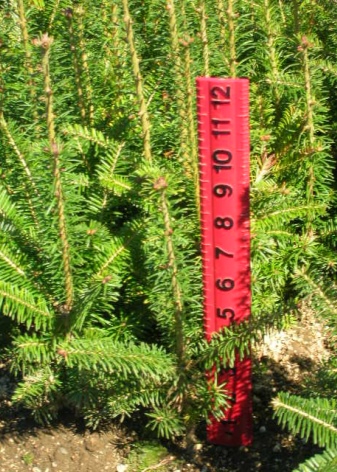
When choosing planting material, it is worth giving preference to crops rooted in containers. For these firs there is no time limit for planting, with the exception of winter. A distinctive feature of the fir root system is the presence of microorganisms on it - mycorrhiza. Their main task will be to help in the assimilation of water and other vital components from the soil, but such an assistant dies extremely quickly without soil, therefore, the acquired seedling should be rooted together with an earthen clod from the container, which increases the chances of a quick adaptation of the culture in a new place. Before planting fir, it is necessary to prepare a site, for this, the soil in the allotted place must be dug up, all weeds must be removed, and additionally soddy soil, sand and peat must be added to the soil, which will have a positive effect on the nutritional value of the soil.
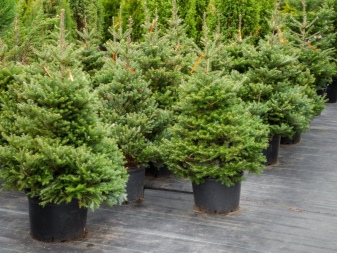
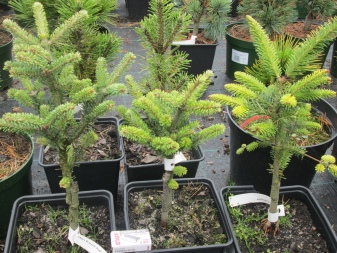
The fir planting algorithm is as follows:
- it is most correct to root an evergreen crop with the arrival of spring, so that the seedling has the opportunity to adapt to new conditions in the warm season, but some gardeners prefer to carry out such work in the fall, which does not reduce the likelihood of plant survival;
- the hole for planting fir should be 2 times larger in size than the root system of the ephedra together with an earthen lump; it is necessary to pour a third of the extracted earth into the prepared recess, moisten the root system of the seedling, and place it in the center;
- then the plant is covered with the remaining amount of earth, the soil is compacted, the plant is abundantly moistened; in some cases, mulching of the trunk circle is allowed using compost for this.
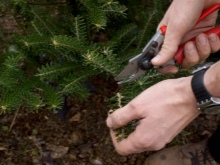

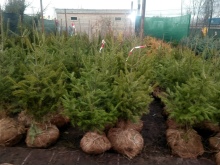
How to care?
In terms of subsequent agricultural technology, the Fraser fir will not cause much trouble, so the culture is suitable for growing even for inexperienced amateur gardeners. The main care activities are outlined below.
- Watering. For additional moisture, the ephedra will need heat, as well as in the first spring months, which will serve as an additional stimulus for the awakening of the tree. And also in the summer, a weekly sprinkling of the crown should be carried out, watering is carried out as the soil dries up.
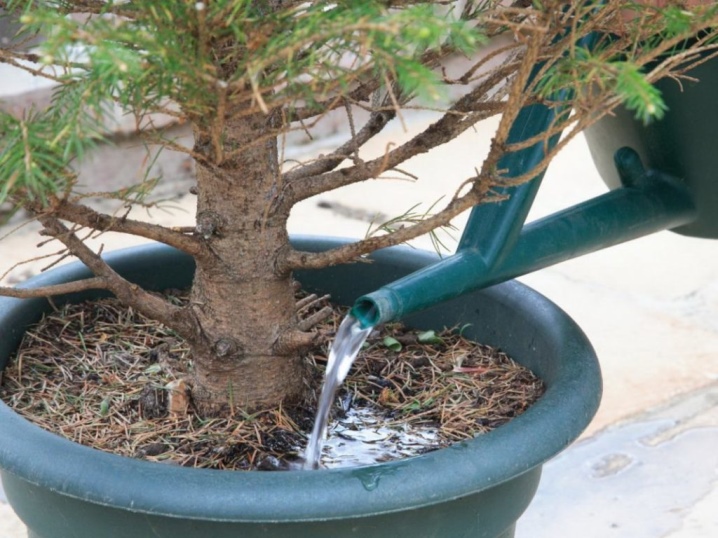
- Top dressing. It is necessary to fertilize fir every spring, adding nutrients before laying a layer of mulch in the trunk circle.The best option would be to use granular formulations. They will need no more than 150 grams per 1 square meter.

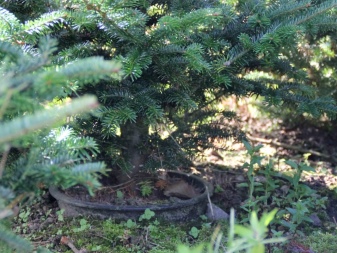
- Mulching and loosening the soil. The trunk circle will require loosening to prevent the formation of a crust on the surface from water, as well as the growth of weeds. As a material for mulch, needles will be the best option.
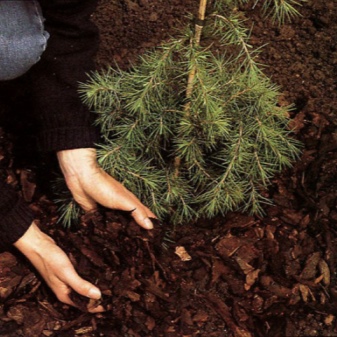
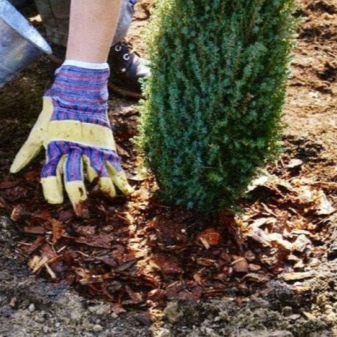
- Sanitary and decorative trimming. By nature, fir will have an attractive crown appearance, therefore, it is carried out formative pruning only in exceptional cases. However, a sanitary haircut for a tree is required without fail, as a rule, such events are carried out with the arrival of spring, until the moment the juices move. Dry parts, as well as damaged shoots, are subject to removal.


- Wintering preparation. By its nature, the culture stands out for its good winter hardiness, but the plant needs a reliable shelter from ice gusts of wind, especially for young seedlings for the first winter. Adult crops develop well after 3 years and endure winter without additional protection.
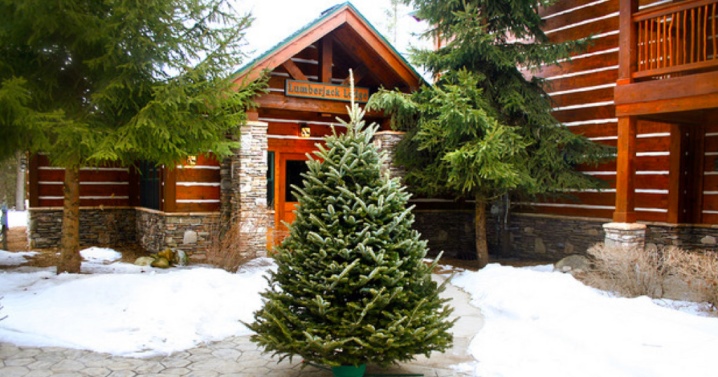
Since the plant, in addition to open ground, is successfully grown in large pots, it is worth knowing the basic nuances of caring for fir in such conditions.
- The plant may die from excessive soil moisture and moisture stagnation in the soil. Therefore, watering the crop should be moderate. It is best to take care of the drainage system in advance, as well as the availability of the pallet. In containers, he conducts watering at the root, in addition, regular spraying of the crown with settled water will be required.
- For the first 2-3 seasons, the culture will need additional feeding. It is most correct to use store formulations intended for conifers.
- Trimming the crown is required only to give it some form. Such work should be carried out in the spring.
- Transplantation of cultures into larger containers is carried out no earlier than 2 years later.
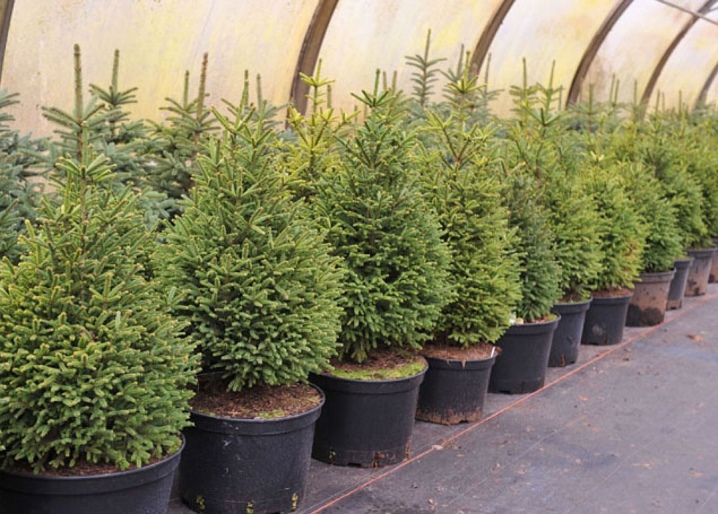
Reproduction
The Fraser fir is a bisexual crop. Ephedra seeds form only when they reach the age of 15. It is recommended to germinate the planting material in fertile soil with the addition of peat and moss, maintaining high air humidity. Spring is a good time to sow seeds, some gardeners sow them in the fall. Before spring rooting, the collected material should be artificially stratified for at least 2 months. After that, containers should be kept at a temperature of at least + 20 ° C, keeping the soil moist.
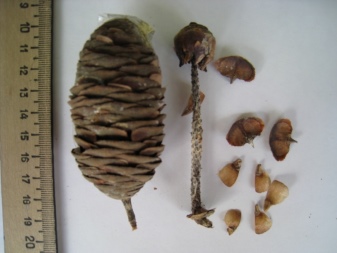
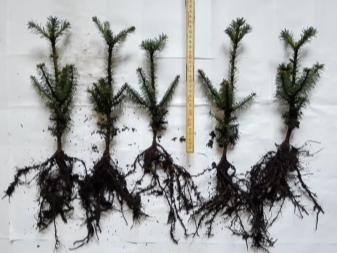
Important! The rest of the methods for obtaining a new culture do not give a positive result, since the cuttings do not take root even in water.
Diseases and pests
The development of many ailments in fir can be affected by temperature fluctuations. It is possible to determine that the plant has problems by the discarded needles; sudden changes in temperature can also lead to the death of the ephedra. Root rot is a danger to the Fraser fir, bacteria develop in the soil when the culture is abundantly moistened, as well as in the presence of groundwater located too close. Signs of the disease will be the yellowness of the needles, as well as the spread of the disease up the tree trunk. Treatment is carried out with fungicides, as well as removal of the affected areas of the plant. A tinder fungus, a type of bacterial rot that affects the root system, gradually rising through the culture, will become dangerous for the ephedra. With such a disease, mushrooms can grow in the near-trunk circle, gradually affecting the trunk, forming voids in it. Culture treatment is carried out with store-bought fungicides.
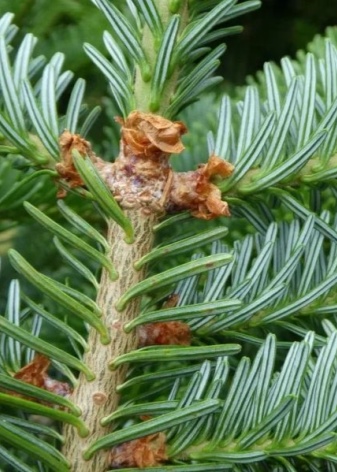
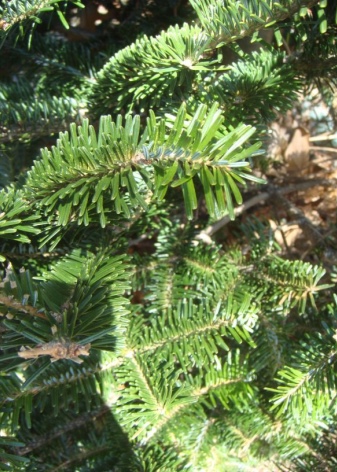
Among the insects that can harm the fir, the spider mite should be distinguished. He is able to actively multiply, destroying culture. Cobwebs and yellowness on the needles will become signs of defeat by such a pest.It will be possible to destroy the tick by maintaining high humidity, using the sprinkling method or spraying with an insecticide. Aphids can feed on the sap of the culture, as a result of which the needles of the fir will fall off and dry. The fight against the pest is carried out with store-bought formulations, as well as preventive treatment of the culture with copper sulfate.
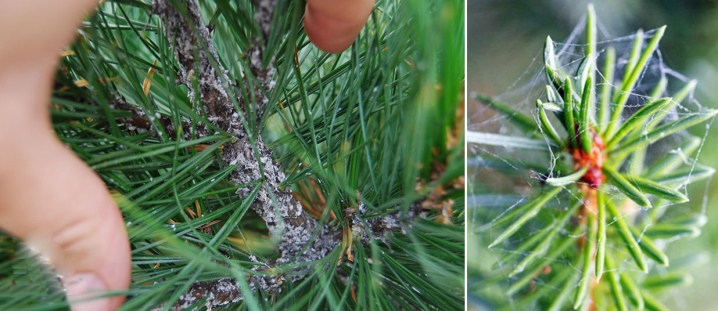
Examples in landscape design
The Fraser fir stands out for its attractiveness, in the light of which it can act as a component of green compositions in landscape design. Decorative dwarf varieties can become a real decoration of the park area thanks to the beautiful and lush crown with dense and green needles. Group plantings using Fraser fir allow to create an attractive landscape design with strict lines and lush greenery.
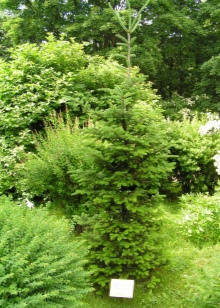
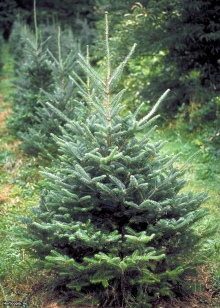
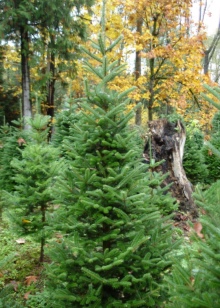
For information on how to properly care for the Fraser fir, see the next video.



































































The comment was sent successfully.